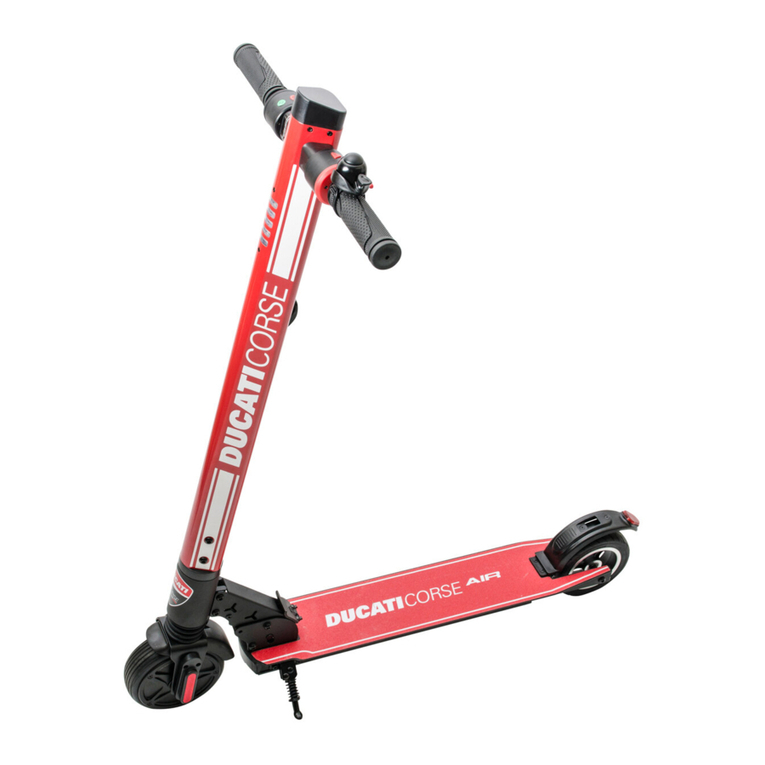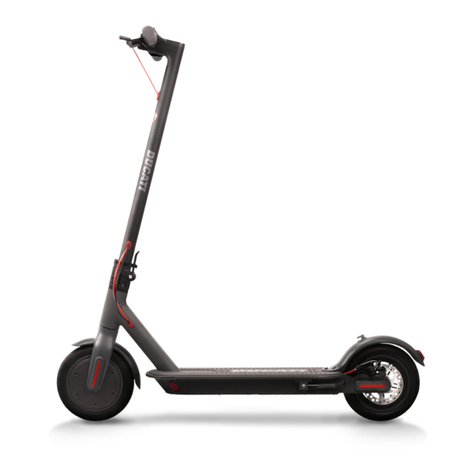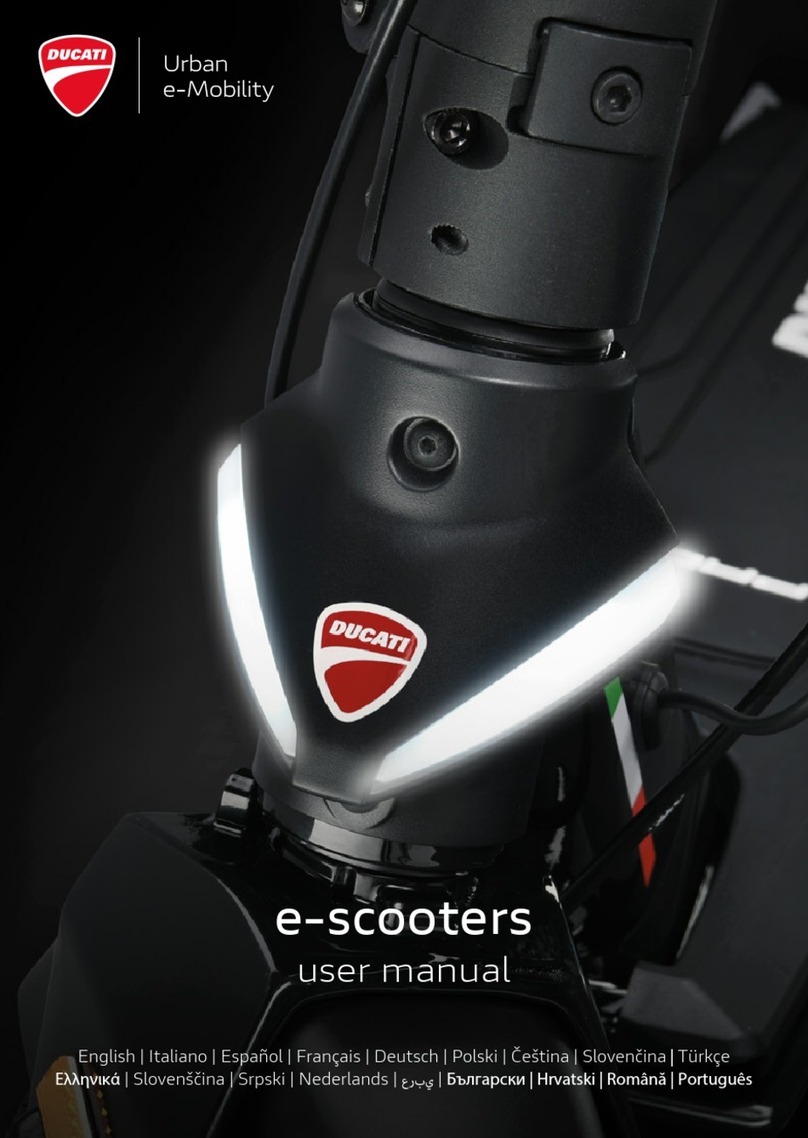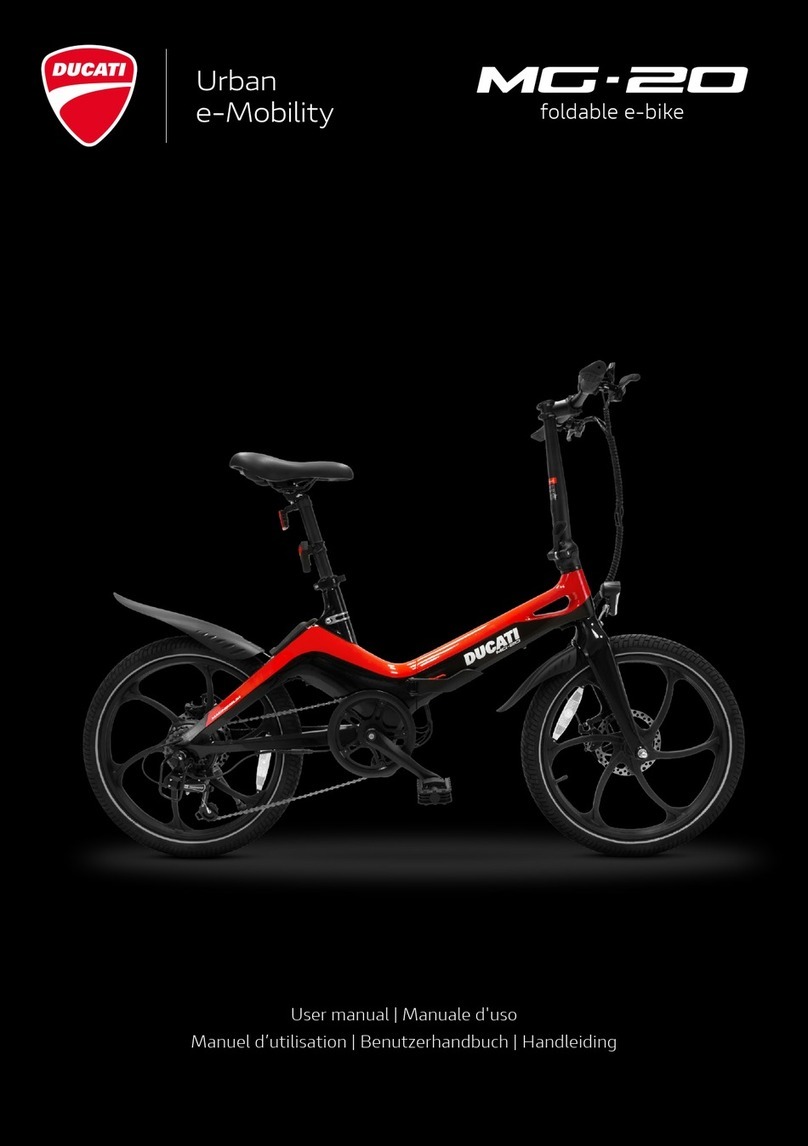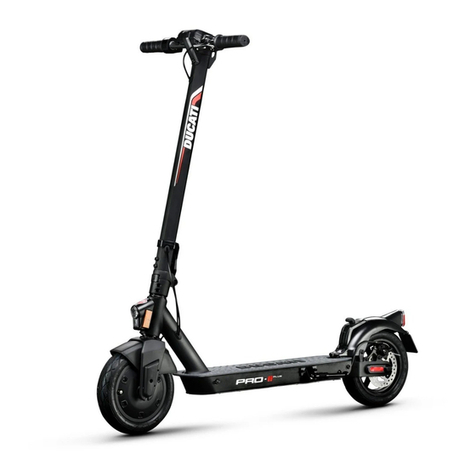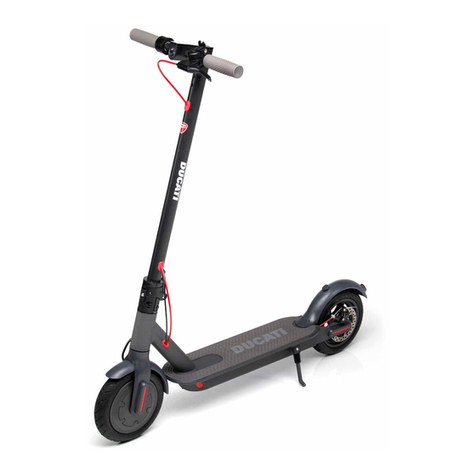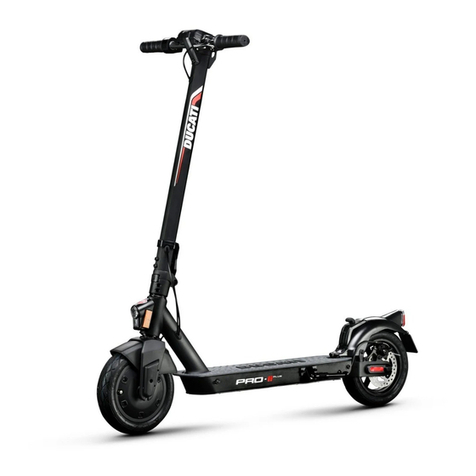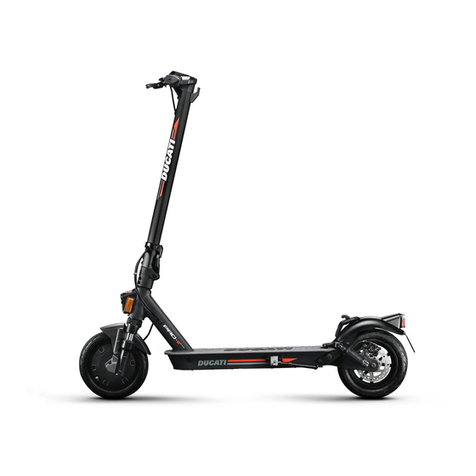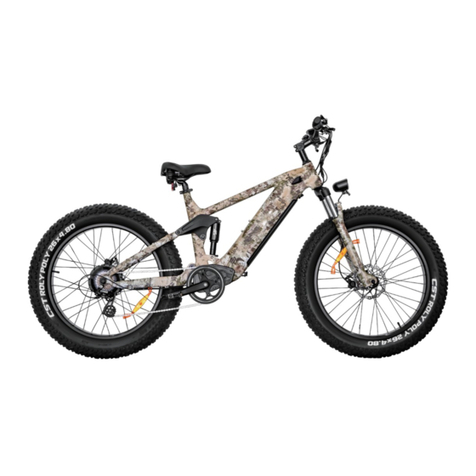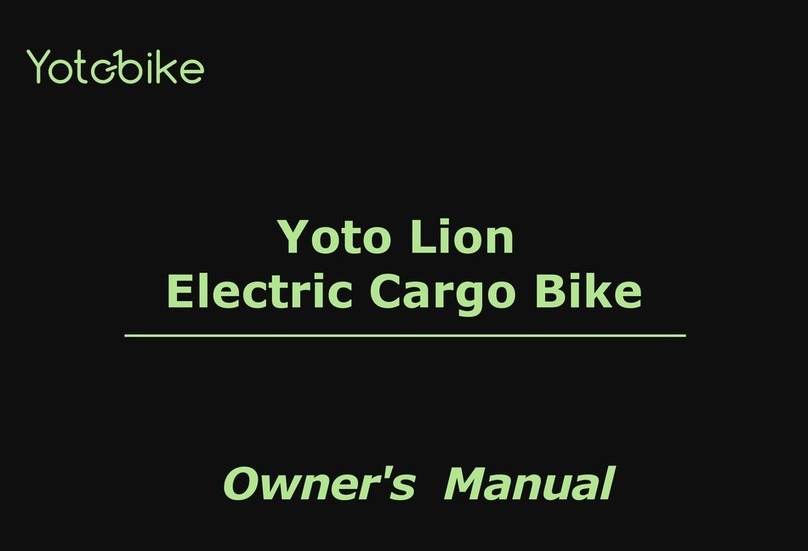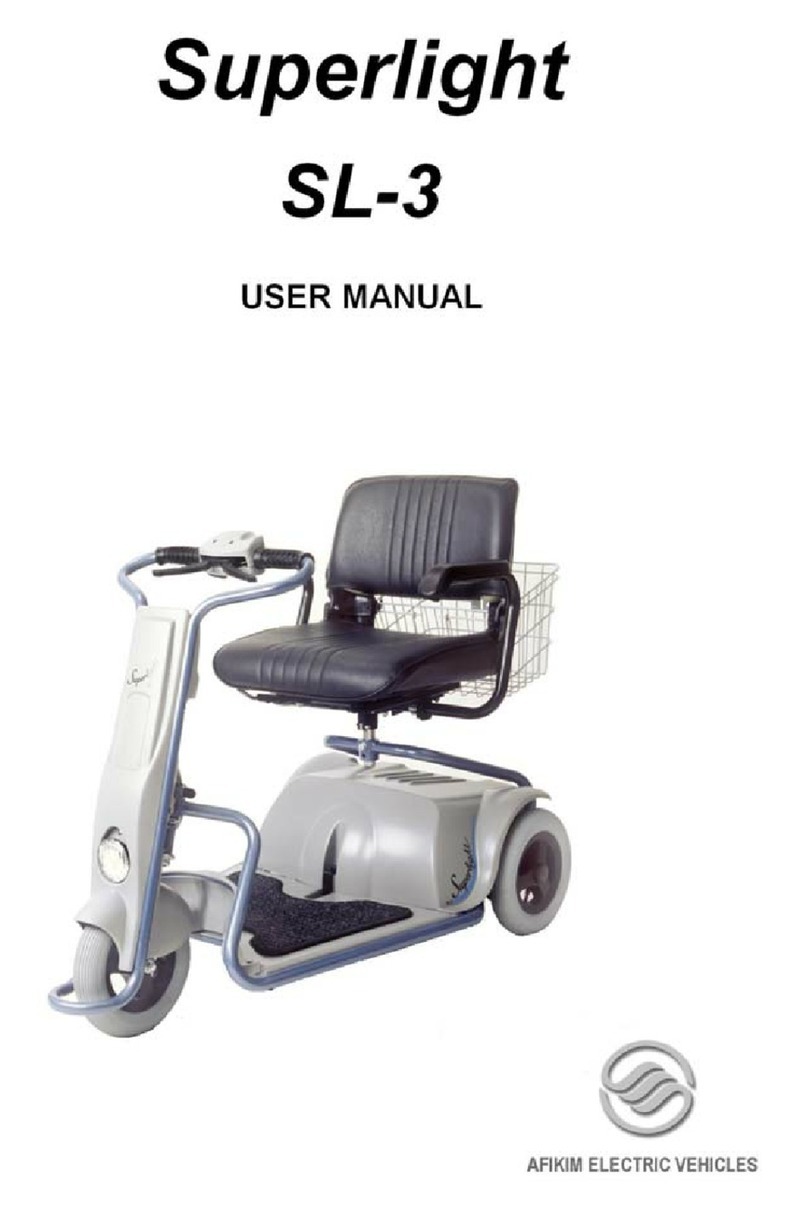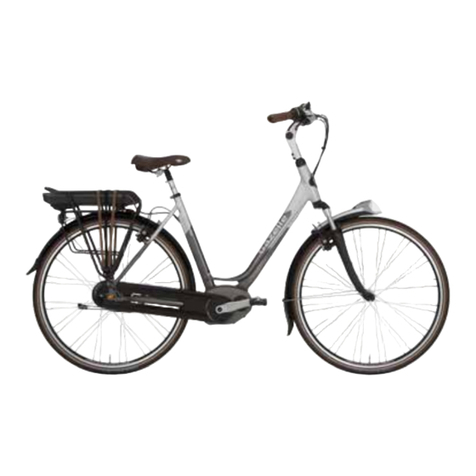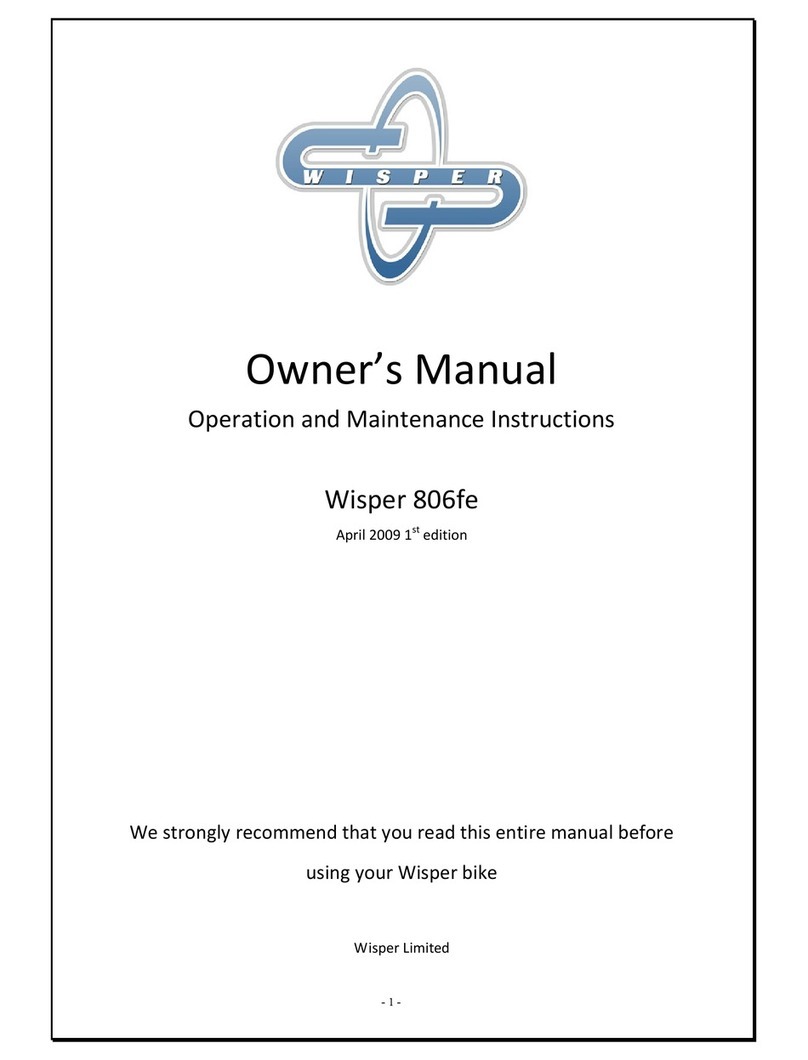
04
2. Quick guide
• Fully charge the scooter before using it for the first time.
• To activate the electrical circuit, hold down the power button for a few seconds.
• Check the battery indicator: if the battery is low, recharge it before use. The electric scooter
is a device that requires periodic charging.
• Check the tyre pressure. If the scooter has not travelled at least 60% of the recommended
number of kilometres or reached its maximum speed in the first three months of use, it is likely
that the tyres will have deflated. If this is the case, re-inflate the tyres to the recommended
pressure (2.5 bar).
• Place the electric scooter on a flat surface.
• Place your hands on the handlebars. Step onto the footplate with one foot and use the other
to give yourself a gentle push and accelerate.
• When the electric scooter begins to move, place both feet on the footboard and press the
accelerator.
• To steer the electric scooter, tilt your body in the direction of travel when turning and slowly
turn the handlebar.
• To stop the electric scooter, release the accelerator and press the electronic brake or lever on
the left side of the handlebar.
• Stop the electric scooter completely before dismounting. Trying to get off the electric scooter
while it is in motion can result in injury.
• When you want to change speed mode, double click on the on/off button (button B in
Section 5).
• When driving at night or in dark places, press the power button once to turn on the lights,
and wear a reflective vest.
For your own safety, wear a helmet and knee pads to protect yourself against falls and injuries
while learning to ride the electric scooter.
The rider assumes all responsibility for any injury suffered when not wearing a helmet or other
protective gear.
The accelerator is activated once the forward speed exceeds 3 km/h.
For safety reasons, the electric scooter is initially set up to prevent a standing start.
WARNING

